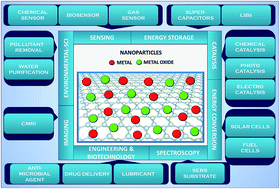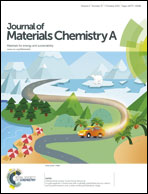Graphene based metal and metal oxide nanocomposites: synthesis, properties and their applications
Abstract
Graphene, an atomically thin two-dimensional carbonaceous material, has attracted tremendous attention in the scientific community, due to its exceptional electronic, electrical, and mechanical properties. Indeed, with the recent explosion of methods for a large-scale synthesis of graphene, the number of publications related to graphene and other graphene based materials has increased exponentially. Particularly the development of easy preparation methods for graphene like materials, such as highly reduced graphene oxide (HRG) via reduction of graphite oxide (GO), offers a wide range of possibilities for the preparation of graphene based inorganic nanocomposites by the incorporation of various functional nanomaterials for a variety of applications. In this review, we discuss the current development of graphene based metal and metal oxide nanocomposites, with a detailed account of their synthesis and properties. Specifically, much attention has been given to their wide range of applications in various fields, including electronics, electrochemical and electrical fields. Overall, by the inclusion of various references, this review covers in detail the aspects of graphene-based inorganic nanocomposites.

- This article is part of the themed collection: 2015 Journal of Materials Chemistry A Hot Papers

 Please wait while we load your content...
Please wait while we load your content...